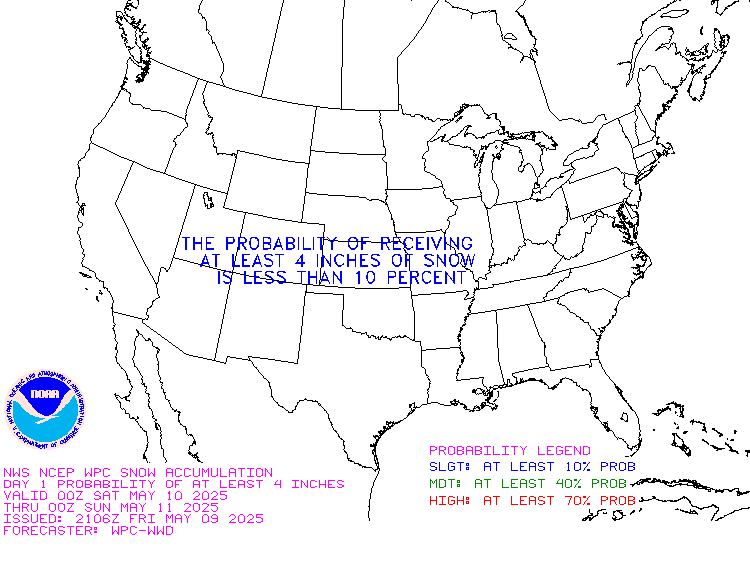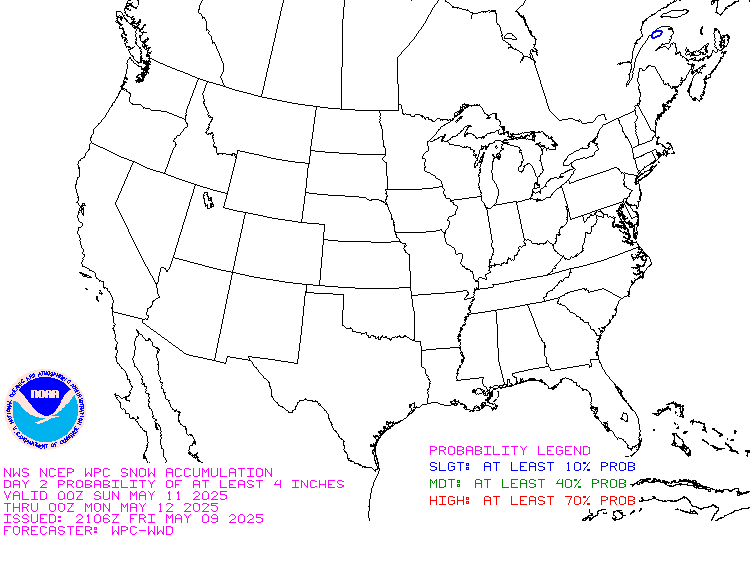It is difficult to find a more comprehensive Weather Outlook anywhere else with the ability to get a local 10-day Forecast also.
This article focuses on what we are paying attention to in the next 48 to 72 hours. The article also includes weather maps for longer-term U.S. outlooks and a six-day World weather outlook which can be very useful for travelers.
First the NWS Short Range Forecast. The afternoon NWS text update can be found here but it is unlikely to have changed very much. The images in this article automatically update.
Short Range Forecast Discussion
NWS Weather Prediction Center College Park MD
348 AM EDT Wed Apr 24 2024Valid 12Z Wed Apr 24 2024 – 12Z Fri Apr 26 2024
…Unsettled weather and severe thunderstorm chances gradually expand
across much of the central United States over the next several days……Active fire weather pattern to become situated over the southern High
Plains……Above average temperatures shift from the Great Basin to the Plains,
while the West and East remain cool through the end of the week…The benign weather pattern experienced throughout much of the Nation over
the last few days is expected to conclude as developing upper troughing
over the western U.S. helps create a ripe spring severe weather setup over
parts of the central and southern Plains. This trough is expected to enter
the Southwest by early Thursday and swing into the central Plains by
Friday. At the surface, returning moisture from the Gulf of Mexico will
begin to lift northward today and pool along a gradually lifting warm
front draped across the southern Plains. Combined with a southern High
Plains dryline, a few developing thunderstorms could turn severe today
from West Texas to central Oklahoma, as well as the chances for isolated
flash flooding. A greater severe weather threat exists beginning on
Thursday as a surface cyclone rapidly deepens over the central High Plains
in response to the approaching upper level trough. The aforementioned warm
front is expected to continue lifting northward while the High Plains
dryline pushes east. This environment is anticipated to produce numerous
thunderstorms across the central and southern Plains, with scattered
storms turning severe. The Storm Prediction Center has issued an Enhanced
Risk (level 3/5) for severe weather across parts of
southwest/south-central Kansas and western Oklahoma into the eastern Texas
Panhandle. Very large hail, severe wind gusts, and a couple strong
tornadoes will all be possible. Multiple rounds of heavy rain could also
lead to scattered flash flooding, which has prompted a Slight Risk (level
2/4) of Excessive Rainfall across parts of northeast Oklahoma, eastern
Kansas, western Missouri, and northwest Arkansas. By Friday, the
aforementioned low pressure system is forecast to deepen and slide east
into the central Plains while shower and thunderstorm chances also push
eastward into the Upper Midwest, Middle/Lower Mississippi Valley, and
southern Plains.Behind the dryline across the southern High Plains, the combination of
very low relative humidity and gusty winds are expected to create Critical
Fire Weather on Thursday and Friday. Any fires that develop will likely
spread rapidly. Outdoor burning is not recommended. Additionally, gusty
winds up to 55 mph could lead to areas of blowing dust.Precipitation chances will also exist elsewhere across the Nation. A cold
front crossing the Northeast today will spread showers over the region,
with snow showers possible across northern New England. Unsettled weather
is expected to develop over the West, Great Basin, and Rockies as well
over the next few days underneath the deepening upper trough. Most
precipiation is expected to remain mostly light, with embedded downpours
and high elevation heavy snow by Friday across the Rockies. This active
weather will also lead to a cooling trend throughout the West compared to
the spring warmth felt over the last few days. Chilly weather is also
forecast across the Northeast through the end of the week as high pressure
builds southward from Canada. Low temperatures could dip below freezing on
Thursday morning and have prompted Freeze Watches to be issued from the
Lower Great Lakes to southern New England. Most of the above average
warmth will be found throughout the Plains, besides of any areas
experiencing prolonged periods of rainfall, with highs into the 80s
remaining across the Southern Tier States until Friday.
To get your local forecast plus active alerts and warnings click HERE and enter your city, state or zip code.
Learn about wave patterns HERE.
Then, looking at the world and of course, the U.S. shows here also. Today we are looking at precipitation.
Please click on “Read More” below to access the full Daily Report issued today.
| Notices: What would you like to learn about? Please provide that to me via the comment section at the end of the article. |
Now more detail on the 48-Hour Forecast (It is a 48 to 72 Hour Forecast actually)
Daily weather maps. The Day 1 map updates twice a day and the Day 2 and 3 maps update only once a day. These maps update automatically. But if that does not happen, you can get updates by clicking HERE
TODAY (or late in the day the evening/overnight map will appear) (Key to surface fronts shown on maps and you will then also be able to insert a city name or zip code and get a local NWS forecast).
TOMORROW
NEXT DAY
We have a new animation of the forecast which shows how things may play out over the next 60 hours. To update click ANIMATION. Doing so will get you to the dashboard. You can then step through the animation or hit LOOP on the upper right of the display. You will have to hit the back arrow ← at the top left on your computer to get back into this article. It is a little more trouble than before but I think NOAA scrapped the animation routine I was using so we have to keep up with “progress”.
The NWS Climate Prediction Center’s: Watches, Warnings, and Advisories plus other information can be found HERE. That takes you to the NWC Severe Weather Site. From there you can select among many categories of information. Remember to hit the back arrow ← at the top left of your screen to return to this article.
ATMOSPHERIC RIVERS
This tells us what is approaching the West Coast. Click HERE to update If I have not gotten around to doing the update. Here is some useful information about Atmospheric Rivers.
Below is the current five-day cumulative forecast of precipitation (Updates can be found HERE)
Ski SnowReports
New Feature – Ski Reports. It is difficult to find reports that auto-update on-screen (and they are very long) but these links will get you to them – If you have additional suggestions make them in the comments section after every Econcurrents Article and we may add those links. We will try to not have too much overlap as that can add to the confusion.
Snow Forecasts. And remember this shows natural snow. Ski resorts also make their own snow.
Day 1

Day 2

Additional snow information can be found here, here, here, and here. The second link provides animations.
Now we look at Intermediate-Term “Outlook” maps for three time periods. Days 6 – 10, Days 8 – 14, and Weeks 3 and 4. An outlook differs from a forecast based on how NOAA uses these terms in that an “outlook” presents information as deviation from normal and the likelihood of these deviations.
Below are the links to obtain updates and additional information. They are particularly useful if you happen to be reading this article significantly later than when it was published. I always try to provide readers with the source of the information in my articles. These links may also be useful for those viewing this article on a cell phone or other small screen.
| Days 6 – 10 (shown in Row 1) | Days 8 – 14 (Shown in Row 2) | Weeks 3 and 4 (Shown in Row 3 but updates only on Fridays) |
| https://www.cpc.ncep.noaa. gov/products/predictions/610day/ | https://www.cpc.ncep .noaa.gov/products/predictions/814day/ | https://www.cpc.ncep.noaa.gov/products/predictions/WK34/ |
Showing the actual maps. They should now update automatically. The Week 3 – 4 Outlook only updates on Fridays. So below is what I call the Intermediate-term outlook. On Fridays, it extends out 28 Days. That declines day by day so on Thursday it only looks out 22 days until the next day when the Week 3 – 4 Outlook is updated and this extends the outlook by one additional week.
| 6–
10
|
|
|
| 8–
14 |
|
|
| 3–
4 |
|
|
HAZARDS OUTLOOKS
Click here for the latest complete Day 3 -7 Hazards forecast which updates only on weekdays. Once a week probably Monday or Tuesday I will update the images. I provided the link for readers to get daily updates on weekdays. Use your own judgment to decide if you need to update these images. I update almost all the images Friday Night for the weekend edition of this Weather Report. So normally readers do not need to update these images but if the weather is changing quickly you may want to.
Temperature month to date can be found at https://hprcc.unl.edu/products/maps/acis/MonthTDeptUS.png
Precipitation month to date can be found at https://hprcc.unl.edu/products/maps/acis /MonthPNormUS.png
World Forecast [that website is has been intermittent so be patient]
Below are the Day 1 -3 and 4-6 forecasts for temperature and precipitation. Updates and much additional information can be obtained HERE
World Temperature Anomalies
World Accumulated Precipitation
This information is provided by the University of Maine. They draw upon many different sources. There is a lot of information available at the link provided. I have just provided two useful forecasts. There are probably over a hundred different forecasts available from this source.
Worldwide Tropical Forecast (This is a NOAA Product)
This graphic updates on Tuesdays) If it has not been updated, you can get the update by clicking here Readers will only have to do that if they are reading this article much later than the date of it being published.
Information on Tropical Storms can be found HERE. Western Pacific information can be found HERE. Note that unless there is an out-of-season storm the below images will not update until the National Hurricane Center starts their seasonal update of these maps on June 1. I include them simply because there can be an out-of-season event in which case it should show up in these maps.


–
| I hope you found this article interesting and useful. |
–
